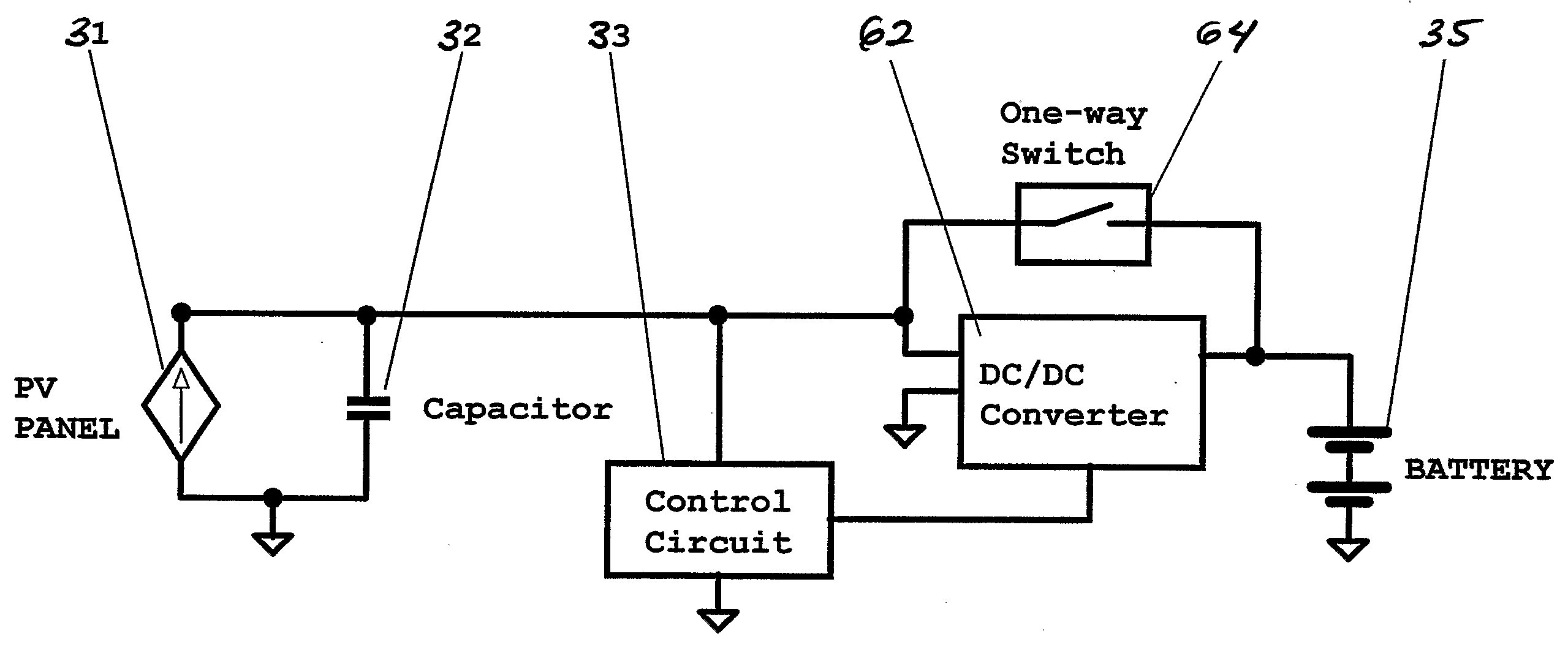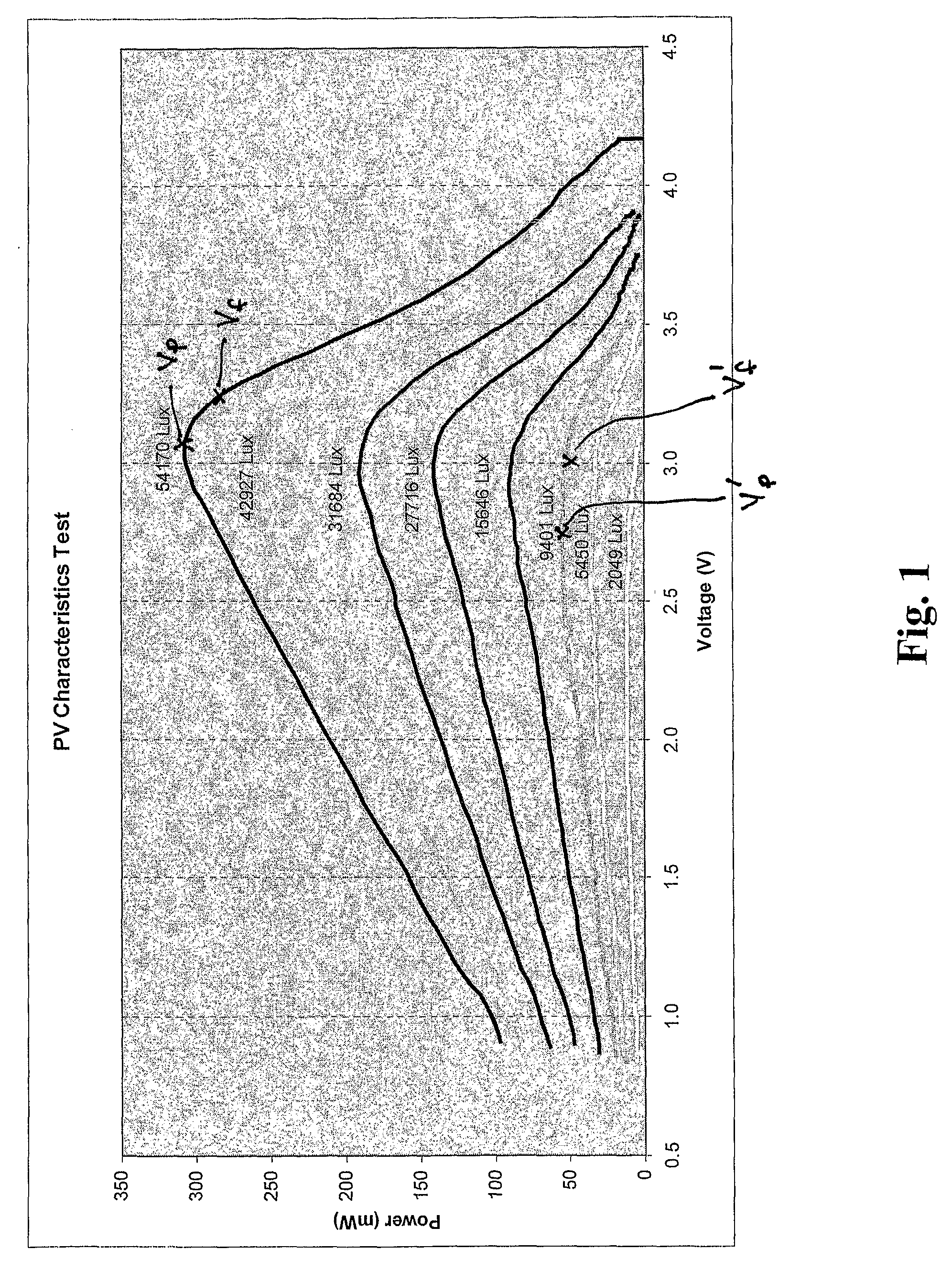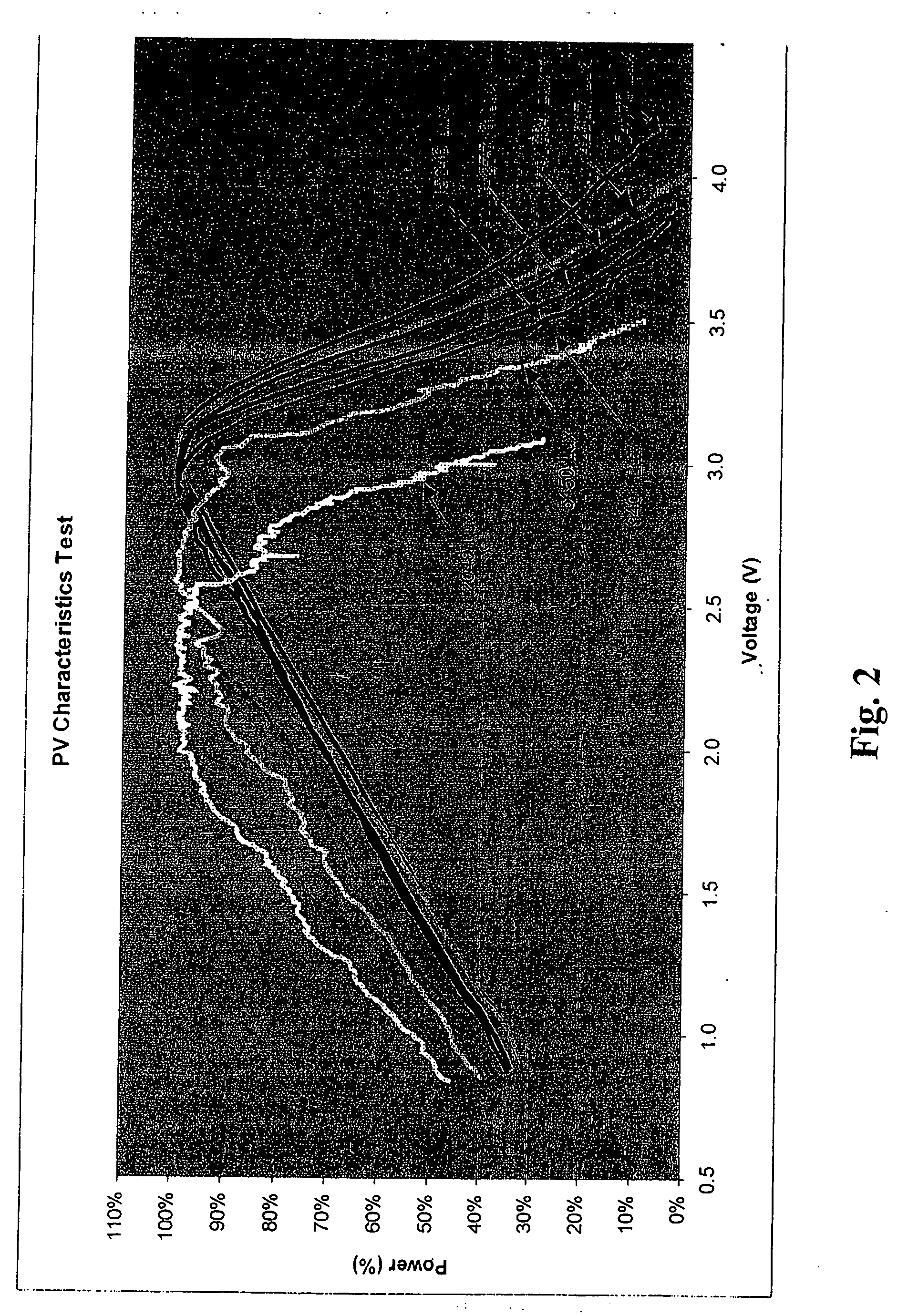Photovoltaic Power Output-Utilizing Device
a technology of photovoltaic power output and power output range, which is applied in the direction of photovoltaic energy generation, secondary cell charging/discharging, photovoltaic power output, etc., can solve the problems of poor situation, insufficient power output at these light intensities, and insufficient voltage rang
- Summary
- Abstract
- Description
- Claims
- Application Information
AI Technical Summary
Benefits of technology
Problems solved by technology
Method used
Image
Examples
Embodiment Construction
[0023]The present invention relates to optimizing the performance of a photovoltaic (PV) assembly with respect to the light intensity it receives. In developing this invention, Applicants performed tests to measure how the power output of a typical photovoltaic assembly was affected by the light intensity. These tests were conducted by Applicants using a photovoltaic assembly in the form of a PV panel with eight cells in series connection. The results of these tests are shown in FIG. 1 where the PV panel power outputs (“Power (mW)”) for different light intensities on the PV panel are plotted against the PV panel output voltage (“Voltage (V)”).
[0024]The graph illustrates that when the light intensity remains substantially unchanged, the power (mW) increases with the output voltage (V) also increasing until the Power (mW) peaks; from where the voltage (V) will continue to increase while the power (mW) declines. Utilizing this phenomenon, Applicants have arrived at the present inventio...
PUM
 Login to View More
Login to View More Abstract
Description
Claims
Application Information
 Login to View More
Login to View More - R&D
- Intellectual Property
- Life Sciences
- Materials
- Tech Scout
- Unparalleled Data Quality
- Higher Quality Content
- 60% Fewer Hallucinations
Browse by: Latest US Patents, China's latest patents, Technical Efficacy Thesaurus, Application Domain, Technology Topic, Popular Technical Reports.
© 2025 PatSnap. All rights reserved.Legal|Privacy policy|Modern Slavery Act Transparency Statement|Sitemap|About US| Contact US: help@patsnap.com



